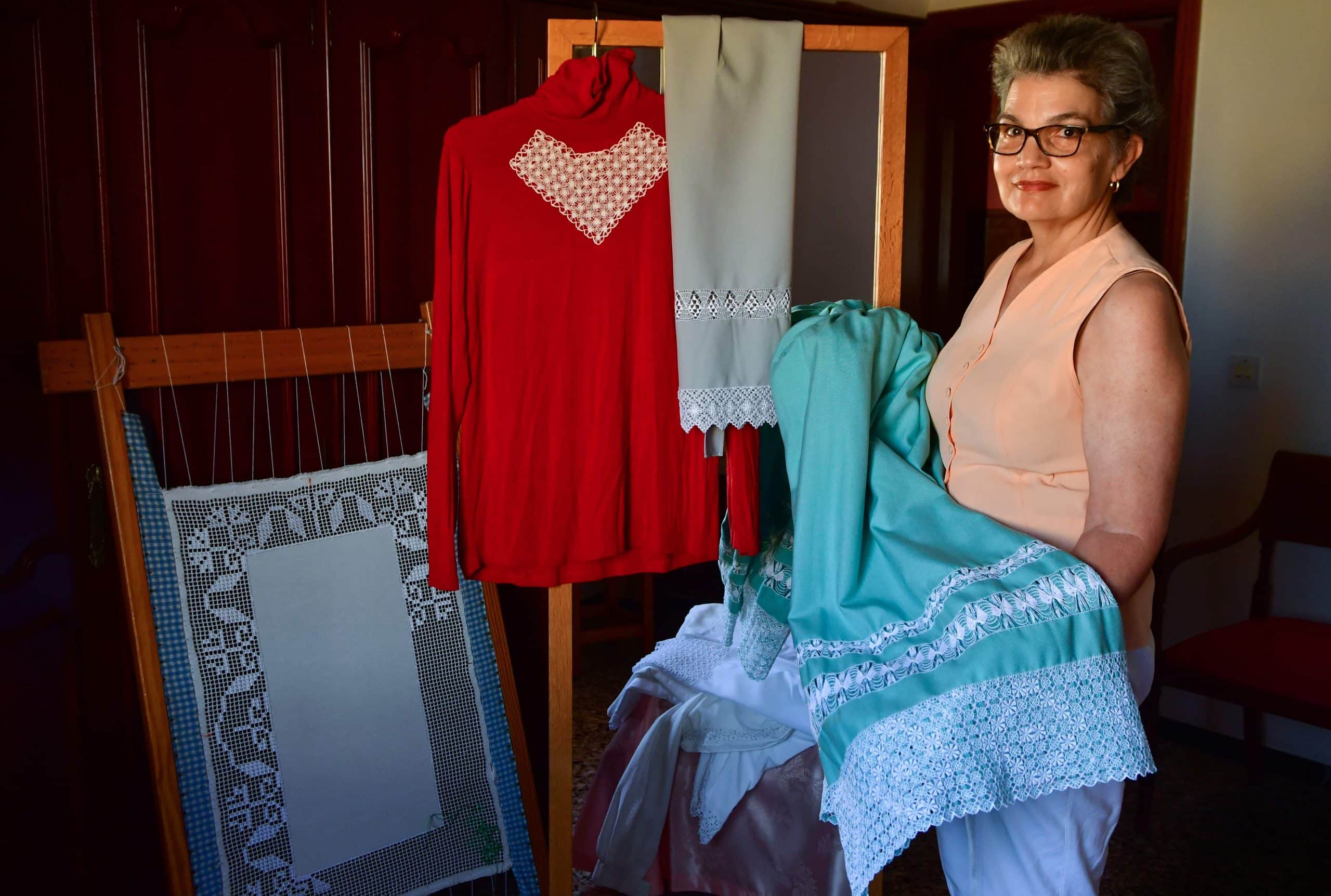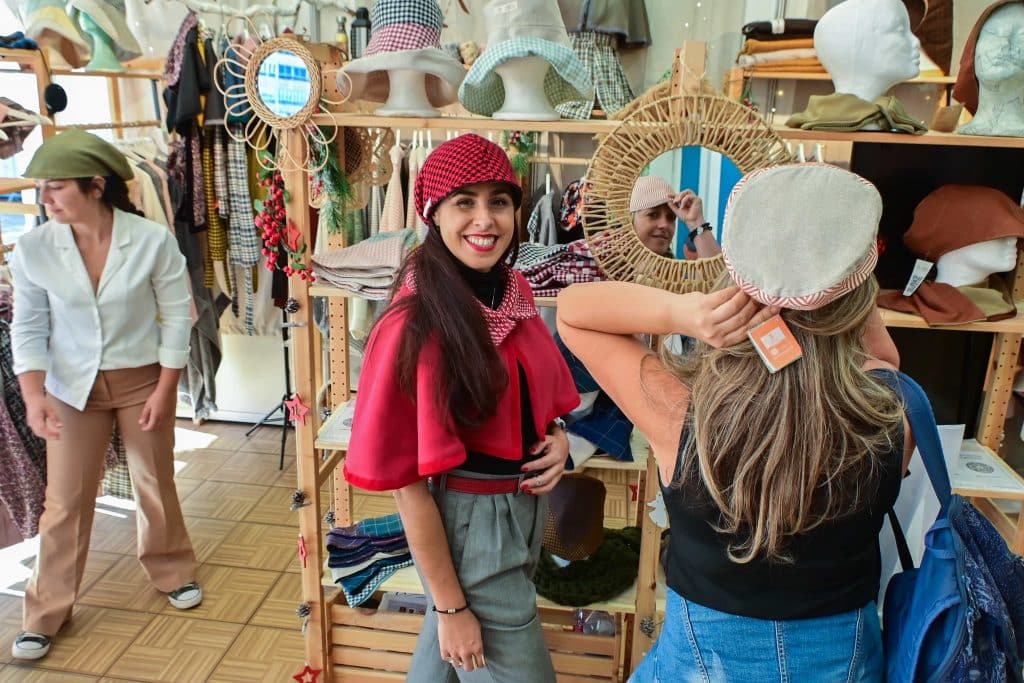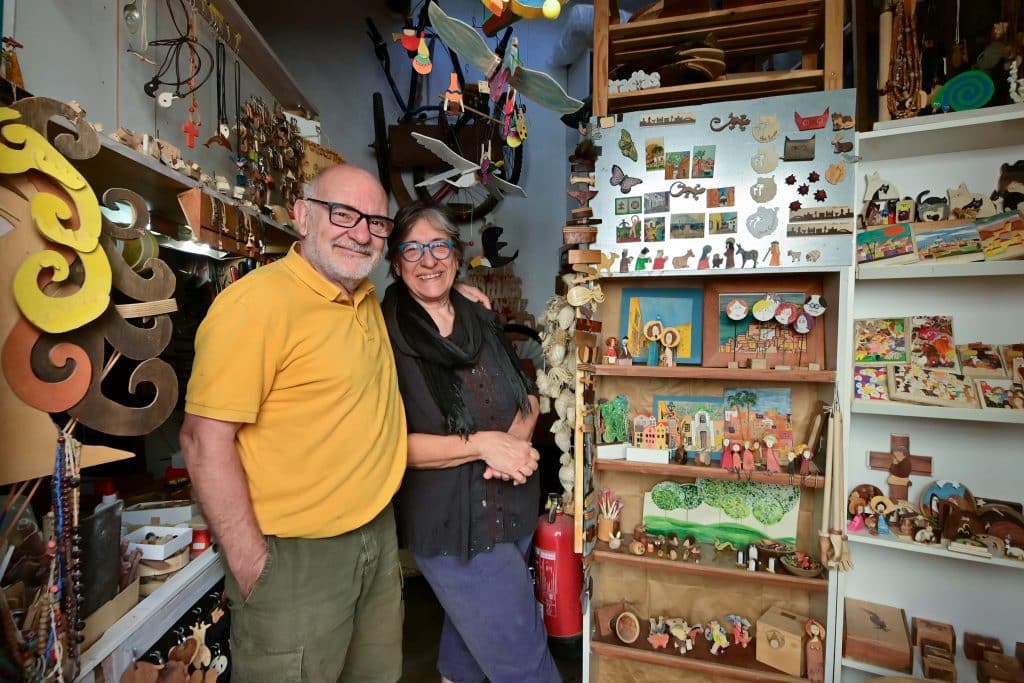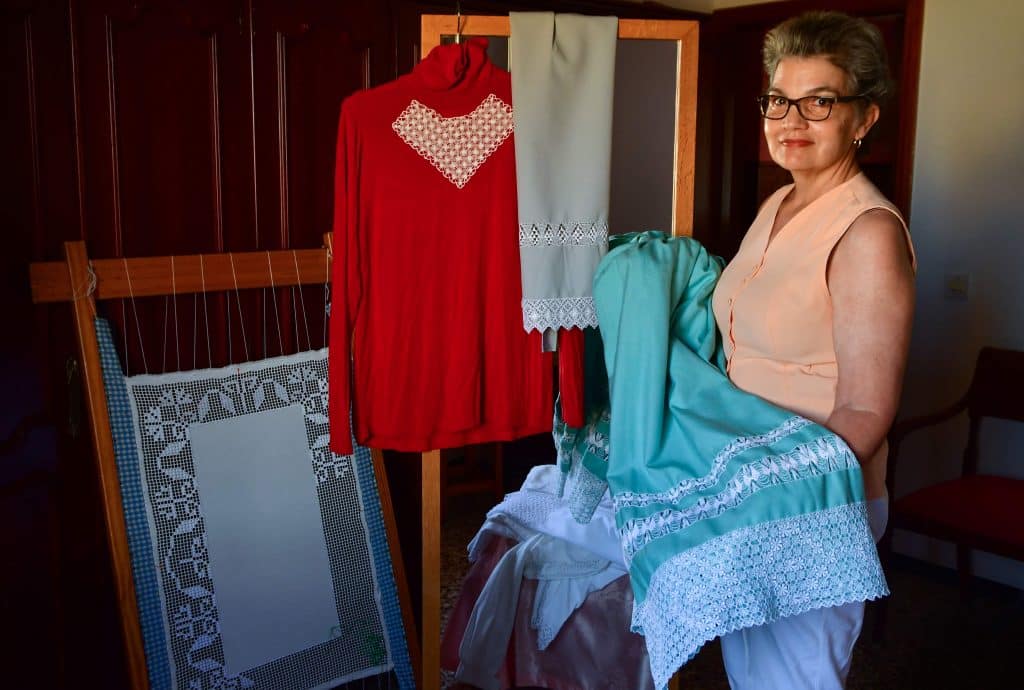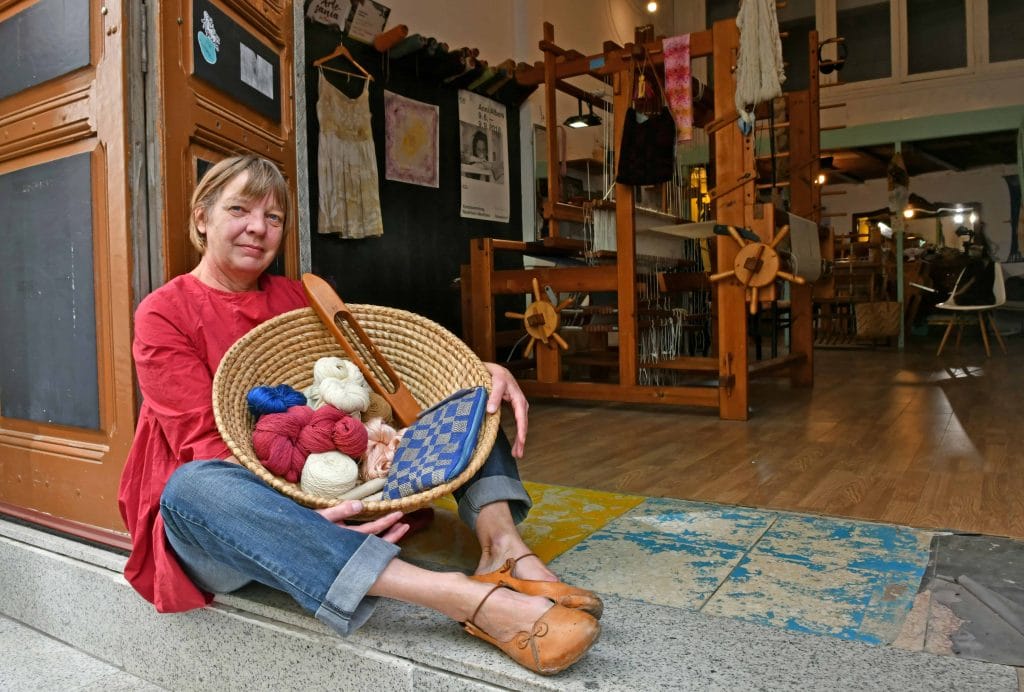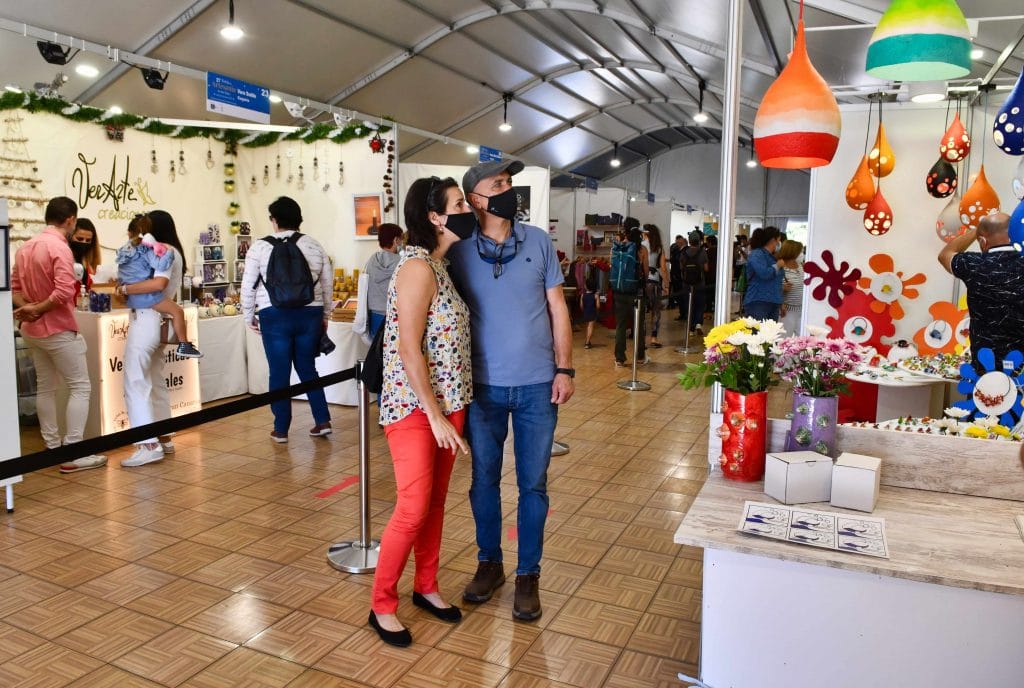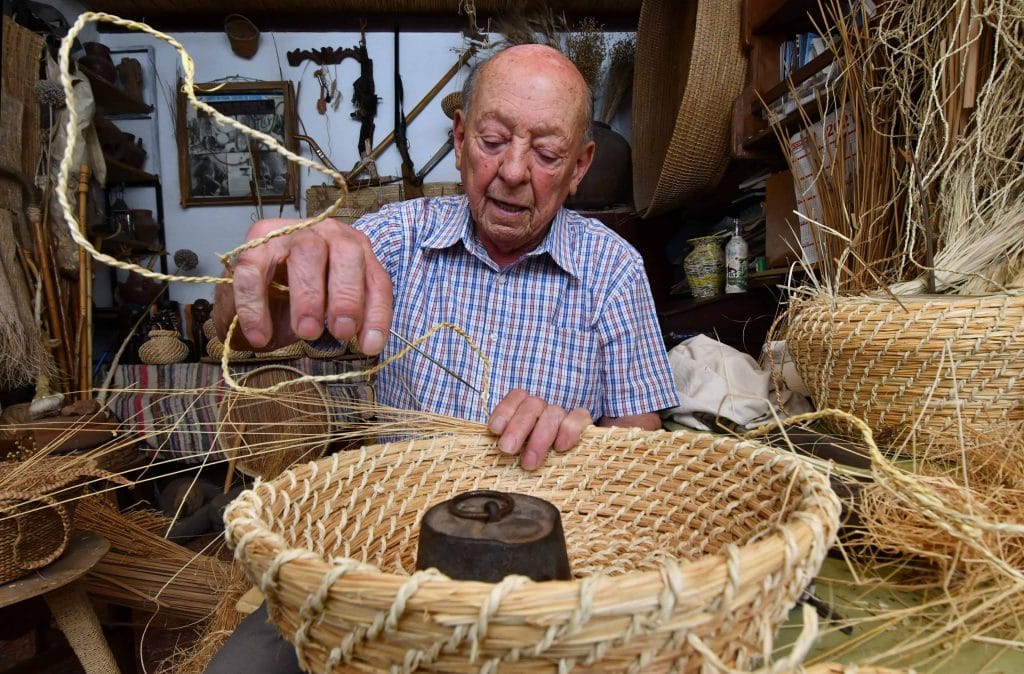Written by @loretosocorro
Clara González González, a fretwork artist from Gran Canaria, born in Gáldar and who lives in Telde, opens up her closet full of fabrics with beautiful fretwork and also reveals some of the secrets of her heart, a lover of these island embroideries.
How did you learn to stall?
I started in the women's section, when I was fifteen years old. Before that, I hadn't picked up a needle… Well, -Clara smiles because she's traveling back to her childhood-she sewed in secret, at the age of seven or so, on my mother's machine.
Was your mother an embroiderer?
No. The machine was for the service. Before there were no clothes made, like today. In the houses you had to sew if you wanted a piece of clothing and, nothing, I would wear it when no one saw me, with a piece of cloth. But since I wasn't practical in using the machine, or in pressing the buttons, or in anything... I would start hitting the pedals and the machine would get tangled up; and of course my mother did not call anyone else but me. "Clara was already driving the machine..." - she said.
Did you want to make yourself some clothes?
Fabrics caught my attention and learning… one of the times I wanted to sew a dress for a doll and I went to make some little hems for it, so I pushed the fabric to tuck it under, and at this point the machine started and grabbed my finger. And I... quiet, not a sigh, who was telling my mother that I caught my finger with the machine, if she didn't have permission to use it?
So, if it wasn't at home, who taught her how to make canary fretwork?
It turns out that a new priest arrived in my town (Los Caideros de San Jose, Gáldar) and he was an innovative priest: everyone was amazed because he went around the houses talking to people and he was very close. Well, he realized that there was a lot of youth there, but without a trade.
Without a job?
We dedicated ourselves only to farming, on the farms: with the goats, sheep, planting, making cheese... And in summer, when the work was finished, because the threshing floor was collected and the animals no longer gave milk, because there was a stage a month and a half with nothing to do, until it was planted again. So he took some ladies from Gáldar to the school room and they taught us a little of everything: to cook, to embroider, to sew, to sew and my -Clara's eyes light up, with her hand placed over her heart- the fretwork hooked me in such a way…
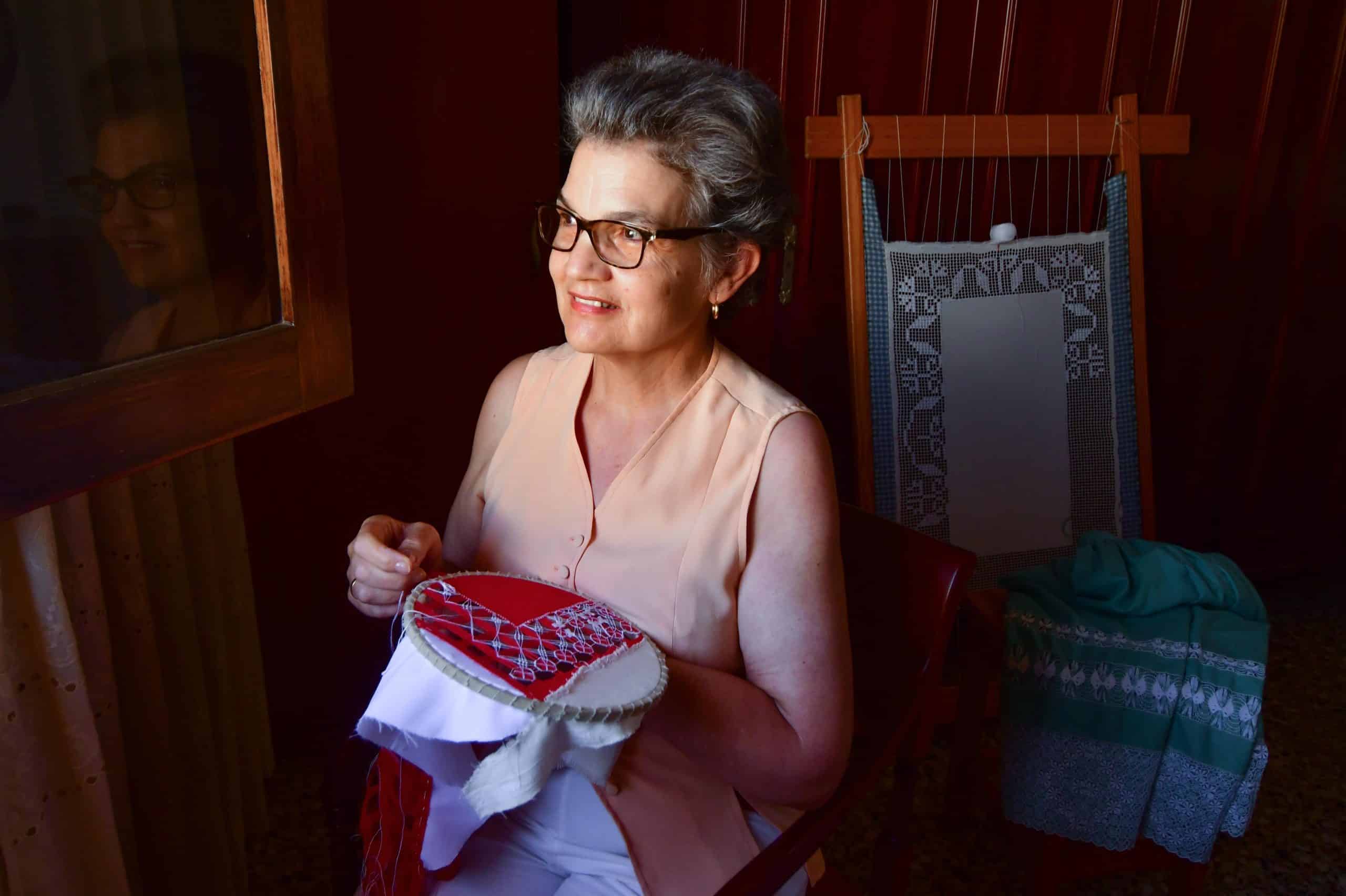
How do you remember that stage as a caladora girl?
When I saw it done for the first time, I didn't have eyes for anything else: that teacher with the looms, with the big fabrics and passing threads, and I fell in love with that work.
Do you keep the first drafts you made, Clara?
Well yes,.. -Clara gets up to get something and returns with a pink cloth, finely laced, well folded and better preserved- look: my first set of sheets. This stall was the only one that I knew of as a maiden and, later, too, twenty-five years passed until I resumed stalling...
What is this stall called?
It's called the bean. Normally it was done on a loom but this one I did on a round drum. Before we had to make ourselves the trousseau.
Did all the girls in the neighborhood do the same as you?
They got hooked on other things and since I was the only one who did fretwork, when they got married I had to make their trousseau: sheets, towels... All with the same fretwork because I didn't know how to make another drawing.
Was it a custom fretwork?
We were five or six friends, the truth is, I gave them to them because I loved to penetrate. They would bring me the fabrics and they would tell me: Since you know how to cover up, cover up the sheets for me, they brought them to me and I privately
How many wedding nights with their sheets?
A few, yes, yes...
Clara told us that after a hiatus of many years it started again….
I stopped when I got married, almost twenty-five years old. When I could, I took it up again and began to learn with a monitor, because I had a little thorn in it, for not knowing more. Although years later I had to stop again due to illness.
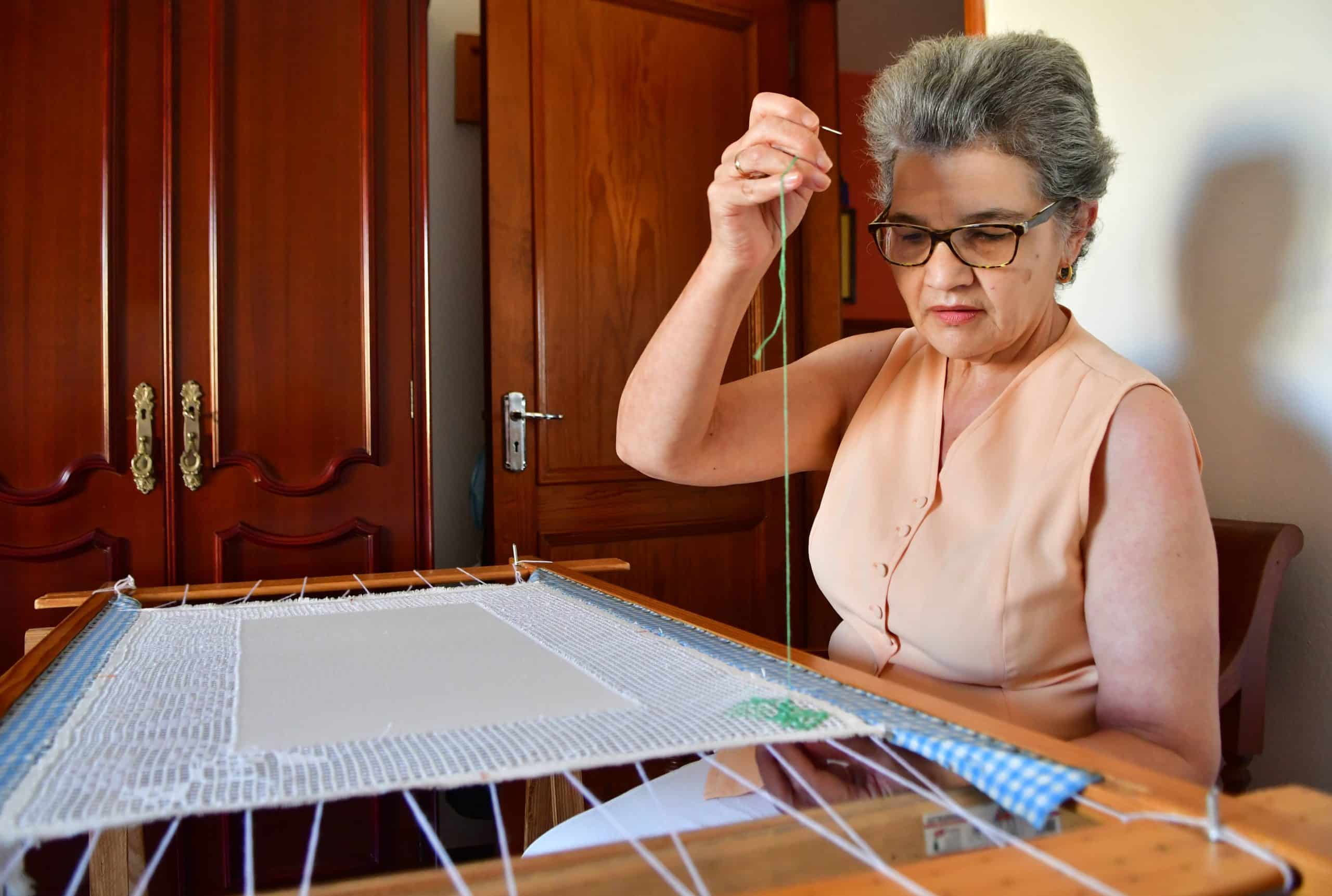
How was that first lap to learn to stall again?
Well, on the one hand it was going back to what I knew and learning more. When I saw that the draft was a world, I launched myself to learn everything. In the classes, the instructor encouraged me to get my craftsman's card and she told me that she had the qualities to do and teach.
Did you want to make up for all the time of the break?
Well yes: the first teacher I had told me to make a cloth of each thing to learn and what I did is take a cloth and make a different drawing in each corner, to learn more and faster.
Did you practice many hours?
As many as I could and I was also asking questions all the time, to see if there were more threads and always asking... I got the itch again.
Are household clothes still permeating: sheets, towels?
I keep getting caught up in everything. Since then I have tried more things, for example in clothes, not only traditional clothes, I also add lace to dress clothes, I make earrings, modern things. The openwork embellishes everything.
So when was it going better did he have to stop again?
I got my artisan card, I made little things to sell at craft fairs, but then I had breast cancer, but even so, the hiatus wasn't that long: they asked me to teach at the neighborhood neighborhood association and here I am . I like that.
Has the disease affected you at work?
Working helps me. If I'm still, that's when I feel bad and my fingers go numb. I move my hands a lot... It's true that I don't have the strength I had before, but this gives me life. Looking forward to Fridays to give classes.
Do you like teaching as much as you liked learning?
I teach everything I know, because when I'm not there this is lost. I would like to find a person who wants to learn, someone who is interested in maintaining this trade. Many people have retired and there is no youth to maintain this, which is so beautiful and so ours.
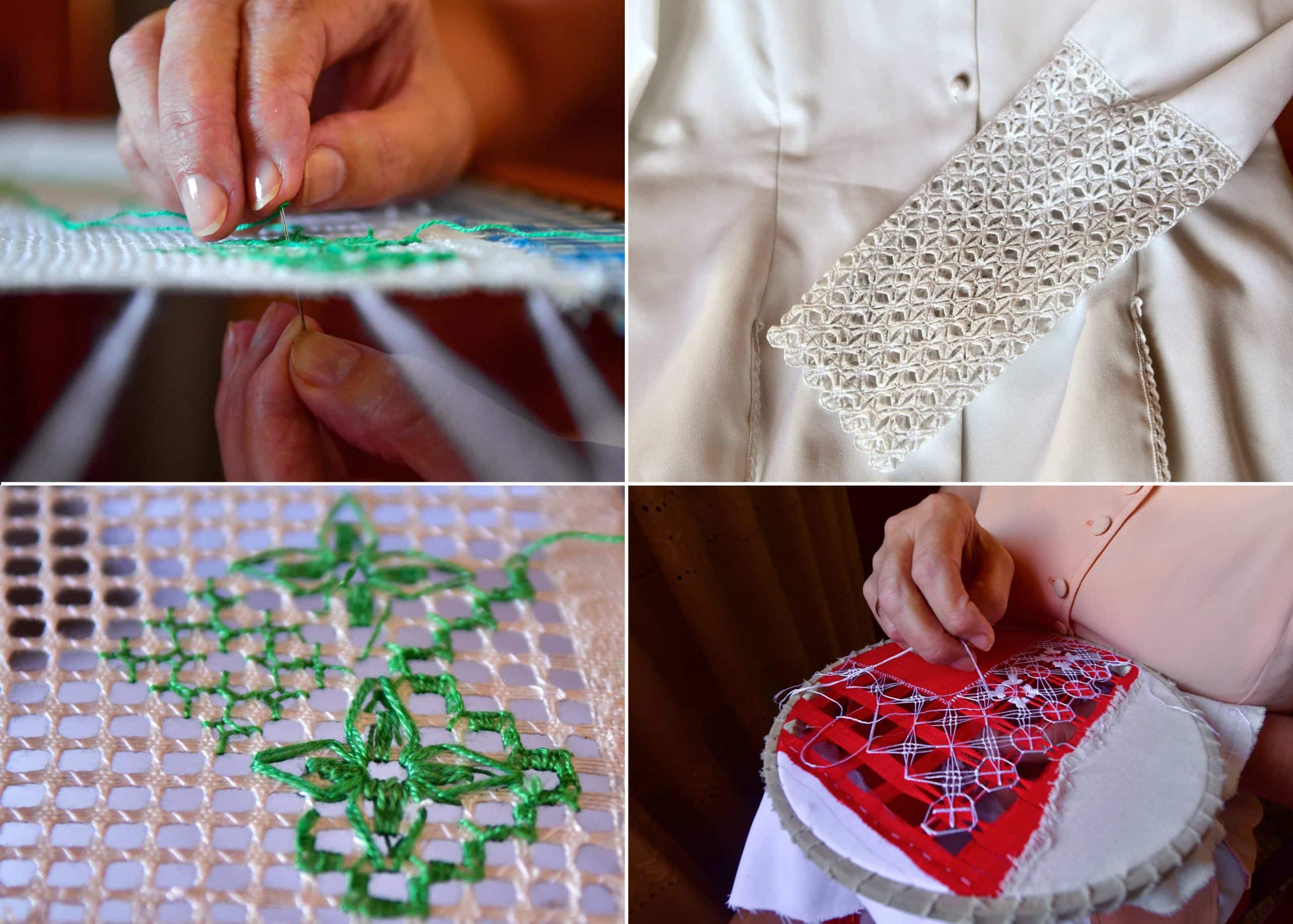
Why do you think youth are not motivated?
They entertain themselves more with technologies. If the draft had sale, even if it is sacrificed, it would be satisfactory. You have to like it and, in addition, put your eyes, head and time on it.
Formerly it was done to help the house, if the salaries were small and the families were large, because the women were dedicated to embroidering and piercing, as a complement, as an extra.
What would it take to bring this trade to life?
What is needed is to open a permanent market for this, so we would have possibilities. It is sold at the Maspalomas fairs, that's what they told me. That tourists value it, foreigners, they do take them away because this is a job that is not seen. Many people on the island find it expensive because they don't think about the hours one spends making it. The cheapest thing I sell are the earrings.
How long can it take you to soak up a sheet?
Above, I estimate two months. Look, my skirt, which I made very elaborate, took me a year and a half to sew on, and the sleeves took me three months to finish, on the loom.
Is there no relief among your students?
There is a girl who is intelligent and has liked her since she was a child, who knows if one day she will return to it, now she has her job, but she hasn't left it completely; From time to time she takes her first steps and I'm here if she wants to ask me, like once when she made a little bag and came to consult me about the fabric. I told her, she marked it with a vitola...
What is a vitola?
It is a measure that carpenters use a lot, to cut, if you do not see well to count the threads; You have to be careful to mark well, without haste, hole and stud- the stud is the piece of cloth-, because the fretwork takes a lot of mathematics.
But can you cheat if something goes wrong?
The fretwork is mathematical and if you make a mistake sometimes you can't start over. I don't like to cheat but in order to fit in, something can be done. The best thing is to score well because if you don't you'll go crazy in the head. The base must be well done, as in the four by four, which is the strands that are left and those that are not. There are people who are starting out or doing it by the tun tun, without counting, and then the displeasures come but it is never thrown away.
How can it be fixed?
With experience, one looks and sees if instead of four by four, then leave two threads and count; make an extra hole, or take eight threads...
Have you been wrong many times?
To this day I have not spoiled anything, although once I cut a piece of fabric, because I also sew, to make a blouse, and I was wrong. But I modified it and made the draft on the other side, to be able to take advantage of it.
Tell me about the drawings you make the most in your fretwork. Clara shows us again, delicately taking and analyzing each piece:
These are "refilo y flor", which is the almond blossom, it is the fastest and easiest to learn. Then there is "sew and sing", that there are four knots and one single knot. Also "the cashew flower, the rosette, the moon..."
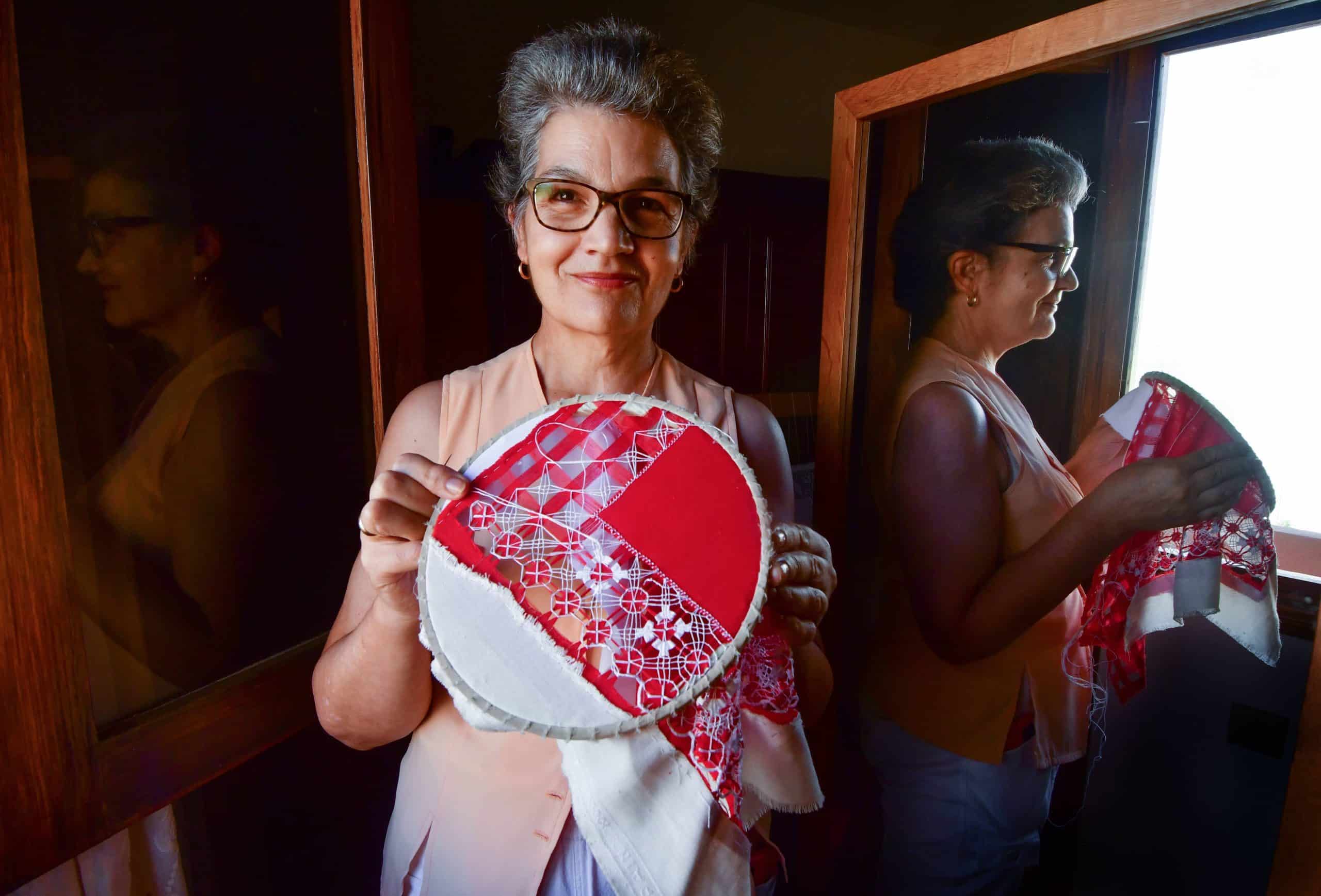
Have you invented any openwork?
The "clear flower". It is a medallion that is made with the spirit point and then a combination is made with a light flower and medallions. I have shown it to many students and I have already seen it in blouses, skirts, communion dresses.
When the invention?
18 years ago. I took it on a tray, to an exhibition in a shopping center and when a monitor passed by and saw it, she says: »where did you get this drawing?» ;»from my head»- «well yes, I have not seen this drawing before, in any book, look at her...» So I put: flower, because it is a flower and Clara, because it is my name.
What remains of that girl Clara who sewed in secret?
All. I see a machine, I see threads... and I'm going straight there. My husband always tells me: "You can't see cloth."
What is your favorite fabric?
The one that serves to pierce. The batiste squeaks a bit because it is difficult to remove threads but I have also worked it.
What type of thread do you work most comfortable with?
She used to use the “perlé” skein because she made the flowers with it, which stood out. It used to be a thicker, shinier thread but it started coming bad; then the "tridalia", which did not fray. After it merged with “el presencia” I started using “crochet 20” and “perlé 8”. The skeins, I don't know if they exist anymore because I used the "8 tridalia" for the flowers, to make them stand out, and the threading with 12. The numbers are the thicknesses.
The girl Clara who sewed in secret is now Clara González González, an artisan, inventor of the Flor Clara stitch and a generous person. Thank you for making us travel to that past where she learned this Canarian trade that she wants to teach. We hope that among her students, there are hands as passionate as yours, so that they continue forward and, as Clara sweetly says: "That this should not be lost."

